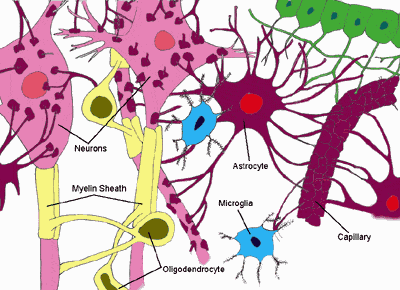A breath of fresh air for the brain’s “glue” cells: astrocytes play a big role in breathing.
Star-shaped cells called astrocytes, are found in the brain and in the spinal cord; they are characteristic star-shaped glial cells, being by far, the most numerous cells in the human brain. According to a new research published in Science today, these cells can sense changes of CO2 in the blood and stimulate neurons to regulate respiration. The conclusion, if true, can shed light on several respiratory diseases, poorly understood today.
“Historically, glial cells were only thought to ‘glue’ the brain together, providing neuronal structure and nutritional support but not more,” explains physiologist Alexander Gourine of University College London, one of the authors of the study. “This old dogma is now changing dramatically; a few recent studies have shown that astrocytes can actually help neurons to process information.”
When the body exercises, the amount of carbon dioxide in the blood grows, making the blood more acidic, dropping its pH. Until now, it was believed that this change was only sensed by other specialized neurons which gave the command to expel CO2. But this study showed that glial cells can sense a decrease in the pH too.
“The most important aspect of this study is that it will significantly change ideas about how breathing is controlled,” says David Attwell, a neuroscientist at University College London, who was not involved in the study.
There is still some disagreement between researchers regarding interaction between astrocytes and neurons. The big question is if astrocytes can do anything fast enough to influence bodily activity, or if they play a rather more passive role. But this research does seem to be pretty conclusive, despite some skeptics.
“The astrocytes are shown here to respond rapidly — within seconds — to a physiological stimulus,”says Brian MacVicar, a cellular neuroscientist from the University of British Columbia in Vancouver, Canada. “The impact of this paper will convince the most hardened sceptic that astrocytes can change neuronal activity in response to a stimulus and thereby alter a behavioural response.”
The main problem is interpreting the data from such a study – identifying the signalling mechanism is especially important. What this study has done is observe what happens, but it’s still not fully clear how this mechanism works.



